Newsletter | Spring Update 2023
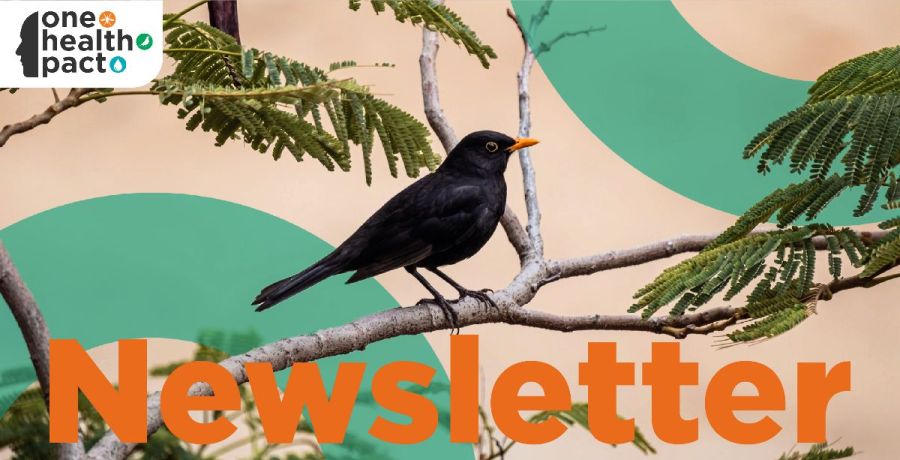
Read on ScienceDirect! A new special issue from One Health: One Health – approach to arboviruses. Edited by Marion Koopmans, Reina Sikkema, Maarten Schrama, Barry Rockx and lot’s of articles by our own One Health PACT PhD’s!
Evaluation of the use of alternative sample types for mosquito-borne flavivirus surveillance: Using Usutu virus as a model
Nnomzie C. Atama, Irina V. Chestakova, Erwin de Bruin, Tijs J. van den Berg, Emmanuelle Munger, Chantal Reusken, Bas B. Oude Munnink, Henk van der Jeugd, Judith M.A. van den Brand, Marion P.G. Koopmans, Reina S. Sikkema
The study examined the use of less invasive alternative samples for flavivirus surveillance in birds. Feathers showed a high detection sensitivity for USUV RNA in both live and dead birds. USUV RNA loads detection in heart, spleen, and lung was comparable to brain samples in dead birds.
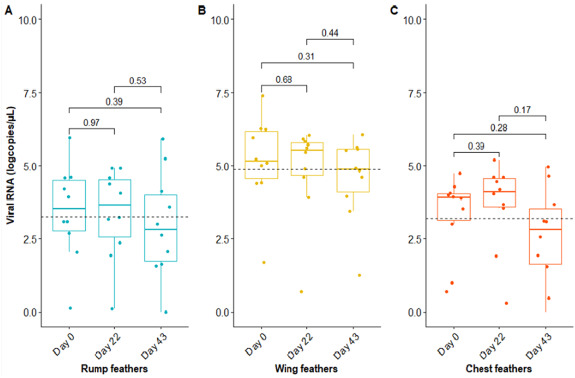
Arbovirus persistence in North-Western Europe: Are mosquitoes the only overwintering pathway?
Rody Blom, Maarten J.J. Schrama, Jeroen Spitzen, Babette F.M. Weller, Anne van der Linden, Reina S. Sikkema, Marion P.G. Koopmans, Constantianus J.M. Koenraadt
Here, we set out to study whether arbovirus persistence of West Nile virus (WNV), Usutu virus (USUV) and Sindbis virus (SINV) occurs in diapausing mosquitoes in the Netherlands. To this end, mosquito collections were carried out in the winter of 2020 and 2021, in hibernacula located in two areas with previously observed WNV and/or USUV activity.
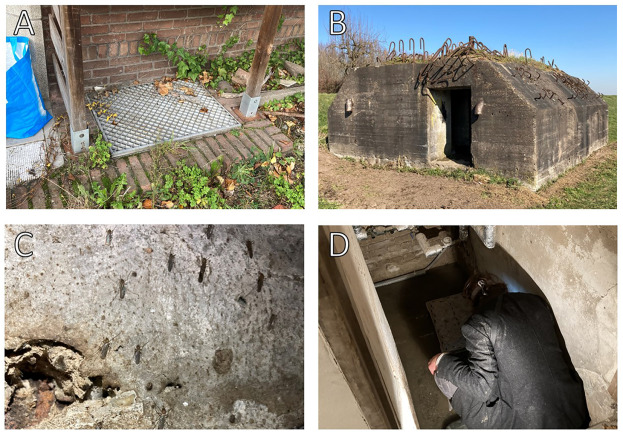
Composition and global distribution of the mosquito virome – A comprehensive database of insect-specific viruses
Jurgen P. Moonen, Michelle Schinkel, Tom van der Most, Pascal Miesen, Ronald P. van Rij
In this study a searchable database of insect-specific viruses associated with vector mosquitoes was constructed from 175 studies, published between October 2000 and February 2022. We identify the most frequently detected and widespread viruses of the Culex, Aedes and Anopheles mosquito genera and report their global distribution.
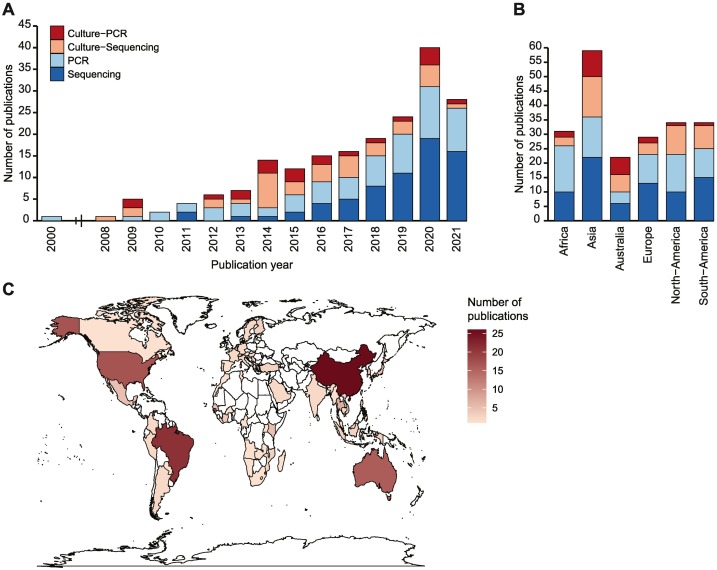
The significance of mosquito saliva in arbovirus transmission and pathogenesis in the vertebrate host
Imke Visser, Constantianus J.M. Koenraadt, Marion P.G. Koopmans, Barry Rockx
We review the immunomodulatory effects of mosquito saliva in the skin and the proposed mechanisms by which mosquito saliva enhances arbovirus pathogenesis in the vertebrate host, and discuss potential differences between Aedes and Culex mosquito species, the main vectors for medically important arboviruses. Gaining more insight into the effect of mosquito saliva in the vector-virus-host triad aids in predicting the potential transmission risk and disease severity of emerging vector-borne diseases.
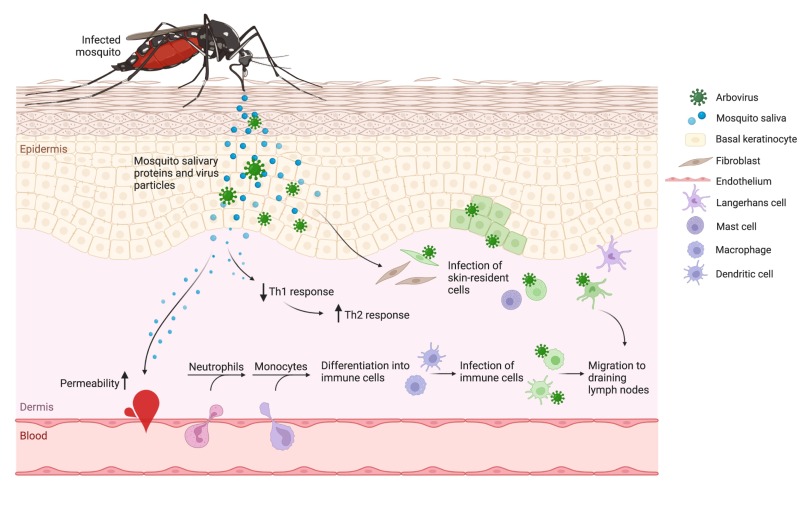
Rapid response screening for emerging zoonotic pathogens, barriers and opportunities: A study for enhanced preparedness of the Netherlands
Kiki Streng 1, Pauline A. de Best 1, Aura Timen, Marion P.G. Koopmans, Wim H.M. van der Poel, Reina S. Sikkema
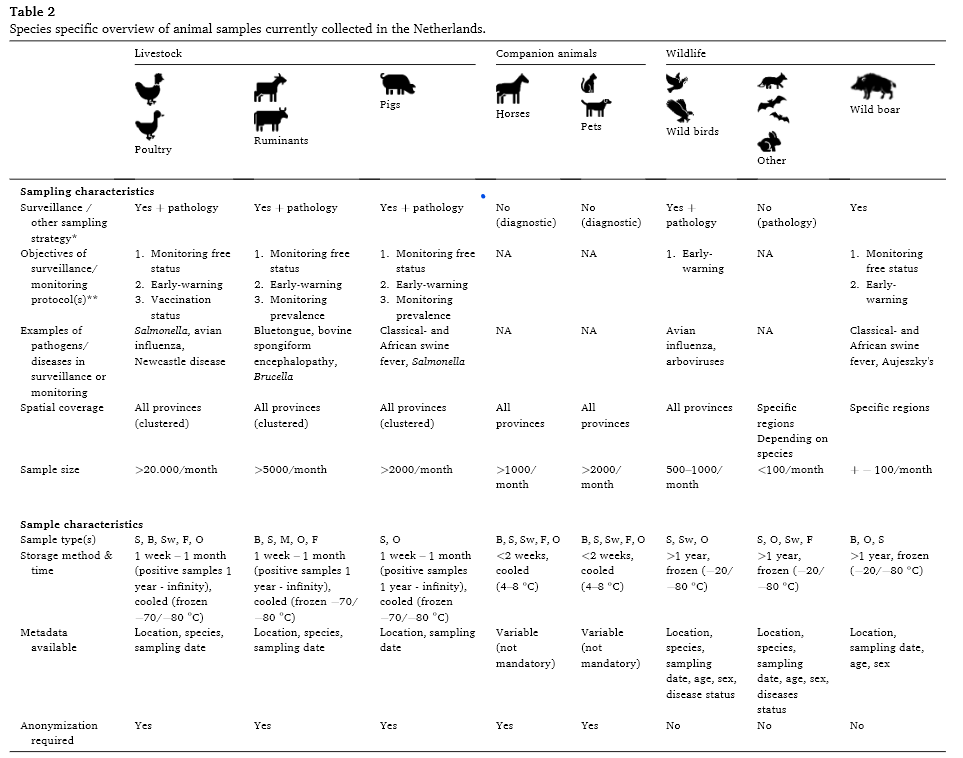
Pathological features of West Nile and Usutu virus natural infections in wild and domestic animals and in humans: A comparative review
Gianfilippo Agliani 1, Giuseppe Giglia 1, Eleanor M. Marshall , Andrea Gröne, Barry H.G. Rockx, Judith M.A. van den Brand
This review reports and compares the clinical signs as well as the gross and microscopic pathological features during natural infection with WNV and USUV in wild and domestic animals, as well as in humans. The main objective of this comparative review is to delineate the common features and the specific differences that characterize WNV- and USUV-induced diseases in each group of species and to highlight the main gaps in knowledge that could provide insight for further investigation on the pathogenesis and neurovirulence of these viruses.

In the present table, the term “Game birds” is referred to the species belonging to the order Galliformes as listed in Table 1
G. Agliani et al.
Assessing West Nile virus (WNV) and Usutu virus (USUV) exposure in bird ringers in the Netherlands: A high-risk group for WNV and USUV infection?
Chiara de Bellegarde de Saint Lary1, Louella M.R. Kasbergen1, Patricia C.J.L. Bruijning-Verhagen, Henk Van Der Jeugd, Felicity Chandler, Boris M. Hogema, Hans L. Zaaijer, Fiona R.M. van der Klis, Luisa Barzon, Erwin De Bruin, Quirine Ten Bosch, Marion P.G. Koopmans, Reina S. Sikkema1, Leo G. Visser1
Bird ringers are highly exposed to mosquito bites and possibly avian excrements during ringing activities. This study therefore investigates whether bird ringers are at higher risk of exposure to WNV and Usutu virus (USUV). Thirty-seven participants (37/157, 23.6%) showed WNV and USUV IgG microarray signals above background, compared to 6.4% (6/94) in the community cohort and 2.1% (2/96) in blood donors (p < 0.01). The higher frequency of WNV and/or USUV IgG reactive bird ringers indicates increased flavivirus exposure compared to the general population, suggesting that individuals with high-exposure professions may be considered to complement existing surveillance systems.
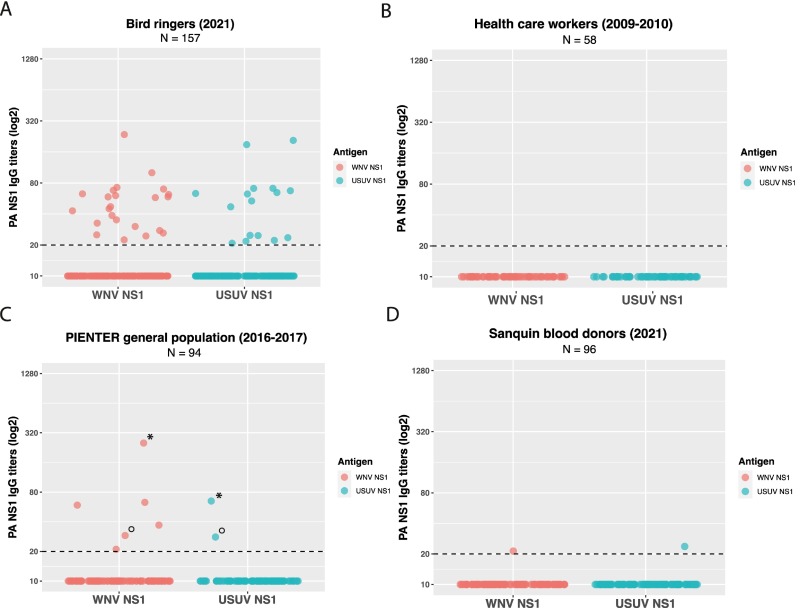
The pathology of co-infection with Usutu virus and Plasmodium spp. in naturally infected Eurasian blackbirds (Turdus merula)
Gianfilippo Agliani 1, Giuseppe Giglia1, Erwin de Bruin, Tjomme van Mastrigt, Rody Blom, Reina S. Sikkema, Marja Kik, Marion P.G. Koopmans, Andrea Gröne, Judith M.A. Van den Brand
Currently, the effects of co-infection of arboviruses and hemosporidians in blackbirds remain unclear. This study investigates the rate of USUV and Plasmodium spp. co-infection in found-dead blackbirds (n = 203) from 2016 to 2020 in the Netherlands. Co-infection between USUV and Plasmodium spp. was observed only in the dead blackbirds. The high Plasmodium spp. presence, associated with lower lesions score, in single infected found dead birds suggest a predominantly smaller pathogenic role as single agent. The higher histological lesion scores observed in USUV and Plasmodium spp. co-infected birds suggests a major pathogenic role for the virus or an increased severity of the lesions due to a possible interplay of the two agents.
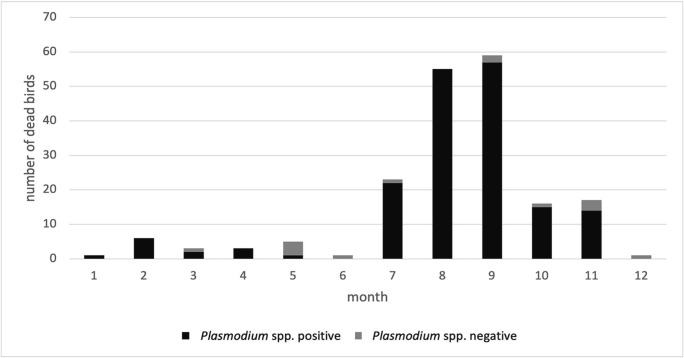
Other news and updates
Climate resilience cities and mosquitoes
Workshop for Avans students
Within “climate resilient cities” project of the second-year students of Avans Enivronmental science, Louie Krol and Pauline de Best organized a workshop on mosquitoes in urban areas, to help the students identify how the design of an urban area might influence area’s suitability for mosquitoes. During the workshop Louie presented his work on mosquitoes in the urban fabric. Ayat Abourashed presented on the citizen science app, Mosquito Alert, and how the data from these tools, together with data on amongst others human movement and climate, can be used in prediction modelling. The students had a lot of interesting questions and directly tried to apply the information from the presentations in their own project.
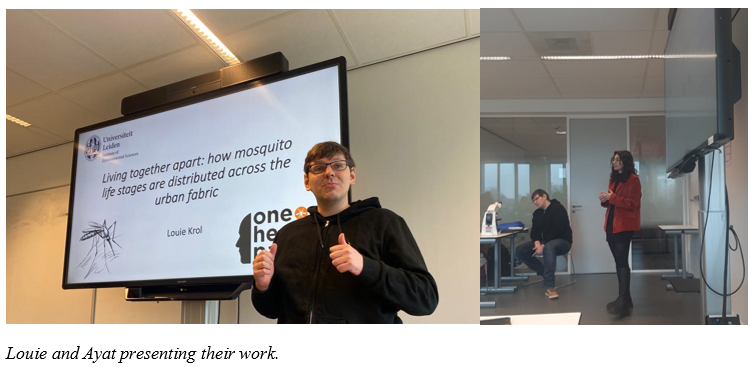
After this introduction, the students were given an assessment form and some tools to assess their area of focus within Breda on three outcome measures: liveability, climate resilience and mosquito suitability. Returning from their assessments, the students analysed their results and made a pitch on how their area performed and how this would affect all three assessment scores.
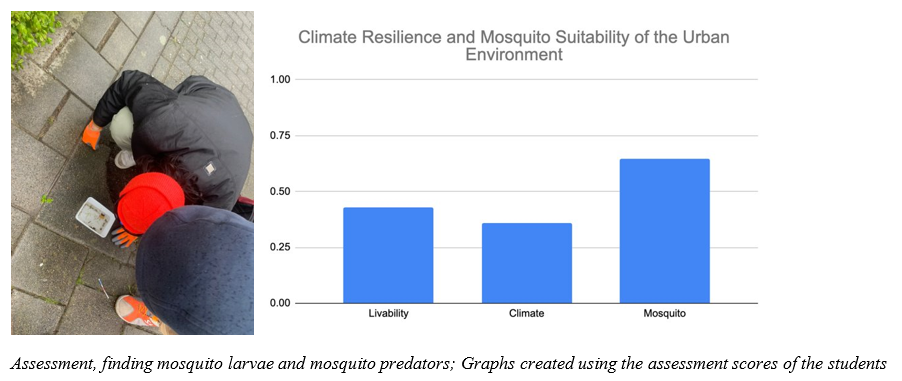
Watching the student pitches, we were happy to see that they got a clear grasp of the message we were hoping to convey, namely: A nice area to live in (high liveability), often goes hand in hand with more green, blue and biodiversity (high climate resilience), leading to more predation for mosquitoes and consequently a less vulnerable environment for mosquitoes. Furthermore, we discussed the validity of using questionnaires (large datasets but subjective) and difficulty of collecting enough data using traditional fieldwork (small datasets), to clearly show the role that citizen science can play in understanding the ecology of mosquitoes in the urban environment.
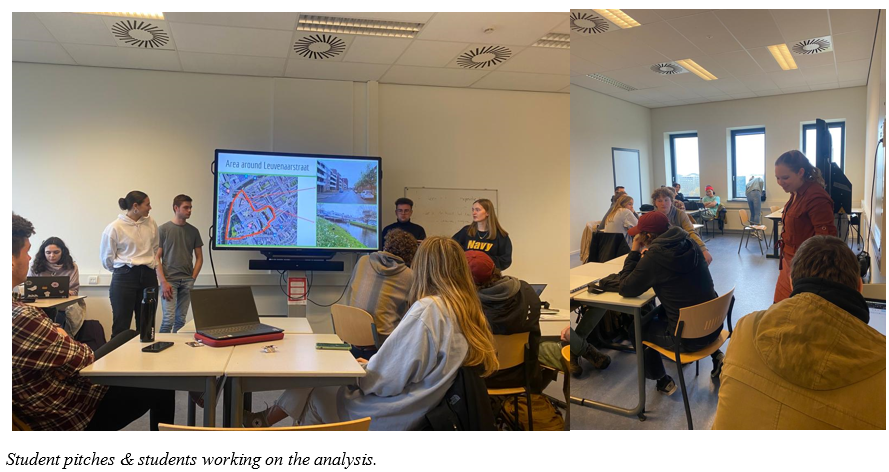
SVEPM conference Toulouse, France
From 22 to 24 March, the conference of the Society for Veterinary Epidemiology and Preventive Medicine (SVEPM) took place in Toulouse, France.
Clara, Afonso and Kiki joined the conference and both Clara and Kiki presented a poster. The conference started with six workshops on a wide range of topics related to veterinary epidemiology. Clara presented a poster on the value of multiple data types in early warning for WNV outbreaks. Kiki presented a poster combining two serosurvey projects, on domestic animals and wild boar, in the Netherlands. Poster sessions were very well organized and sparked many discussions. Next to a lot of interesting talks, posters and discussions, there were great opportunities to enjoy French cuisine and explore the city.
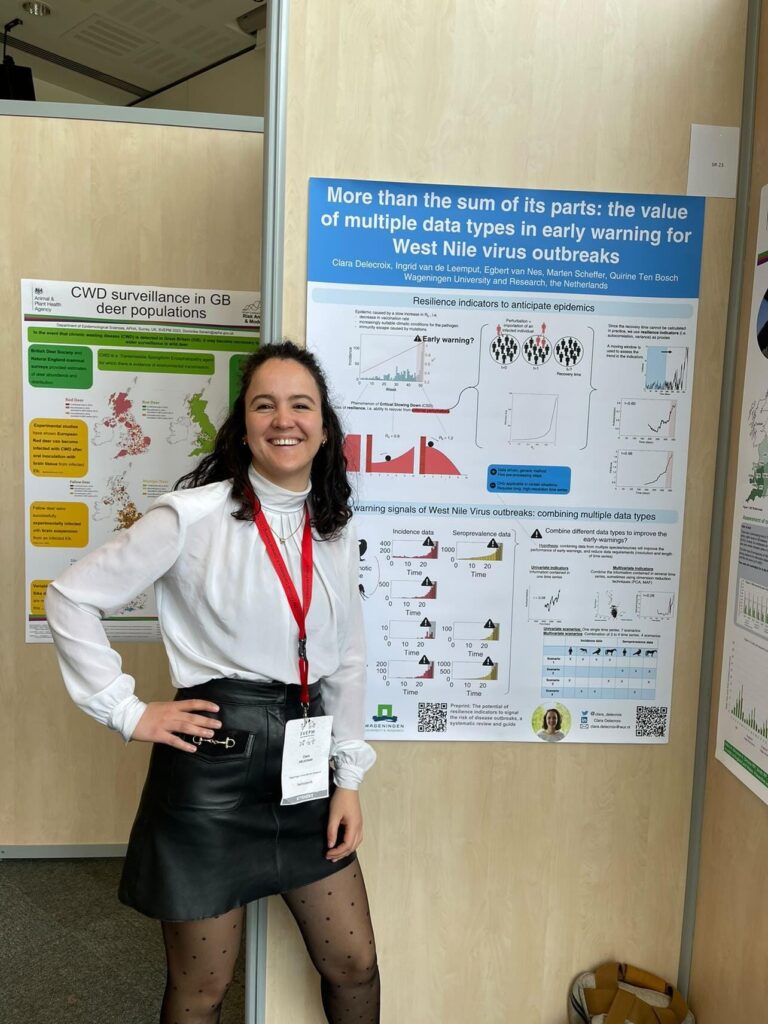
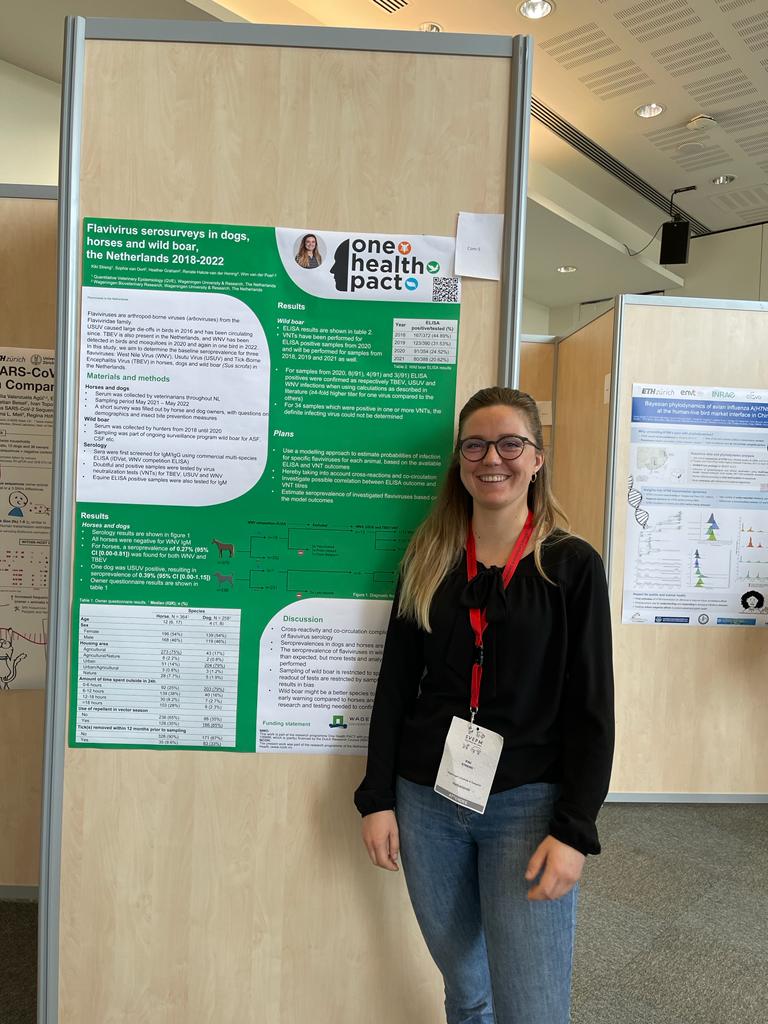
Even though the way back to the Netherlands was not as smooth as the way to France (due to strikes and protests), everyone made it home safely 🙂
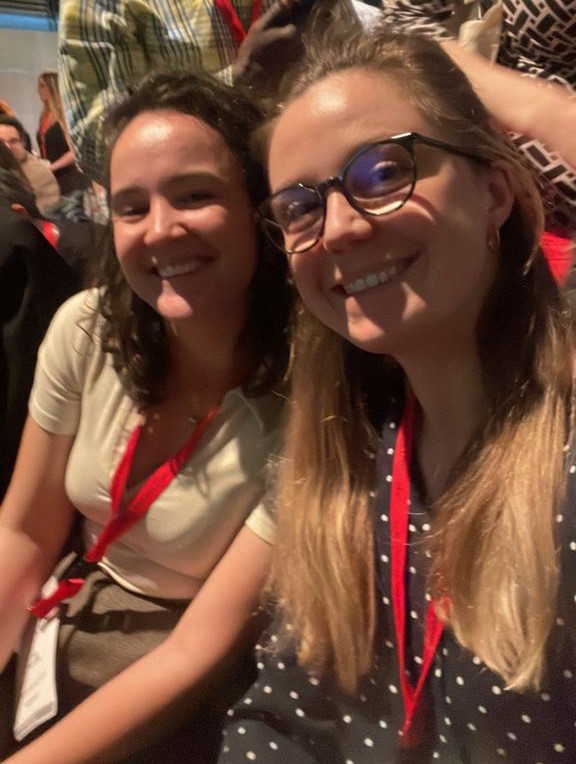
One Health PACT & Technasium
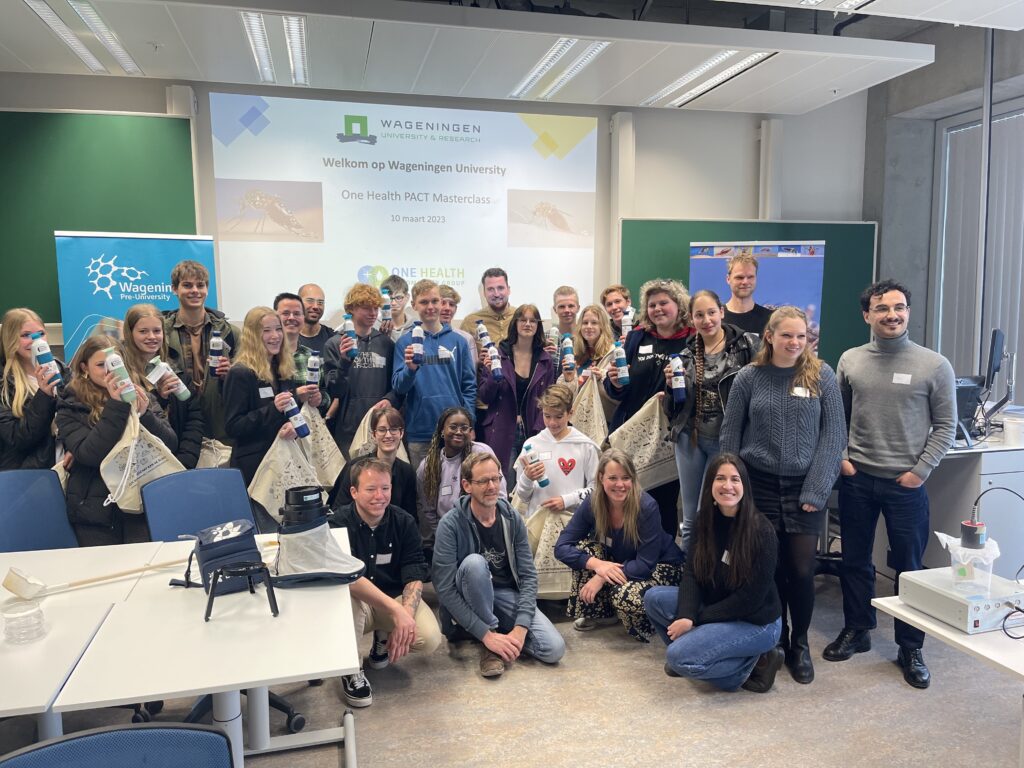
On Friday, March 10, One Health PACT PhDs gave a master class on scientific research to Technasium students. The students presented their research design and received feedback from the PhDs and were allowed to take a look in the mosquito lab. Location: Wageningen University.
Technasium students received feedback from One Health PACT PhD’s Pauline de Best, Afonso Dimas Martins, Chiara de Bellegarde, Rody Blom, Charlotte Lindhout and One Health PACT PI Sander Koenraadt.
Agenda
Upcoming Events and conferences
7th Dutch Arbovirus Research Network Meeting
June 8
The 7th Dutch Arbovirus Research Network (DARN) meeting will facilitate sharing the latest findings in the arbovirology field and connecting arbovirologists in the Netherlands.
The DARN 2023 meeting will be held on Thursday June 8th, 2023 in Rotterdam. Participation is free, but registration is required. The registration deadline is May 1st, 2023. If you like to present your work in an oral presentation (15-20 min) or pitch (5 min), please submit your abstract by email to darn23@erasmusmc.nl

Annual Scientific Meeting
Are we ready for the next pandemic?
Date: Thursday 22 June 2023
Time: 10.00 -18.00 (Registration from 9.30 hrs)
Location: Geertekerk, Geertekerkhof 23, 3511 XC Utrecht
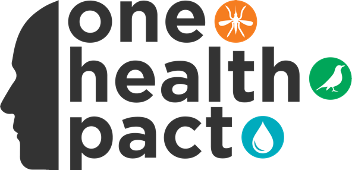
One Health PACT
Scientific Retreat
June 23
Save the Date!
This is not to be missed, with lots of scientific talks, see what steps you can still take collectively in your scientific research, catch up during the breaks. We will make it another unforgettable one day retreat! Unfortunately this time without staying overnight, campfires and morning bird watch and yoga sessions!
Registration will open soon.
Social Media
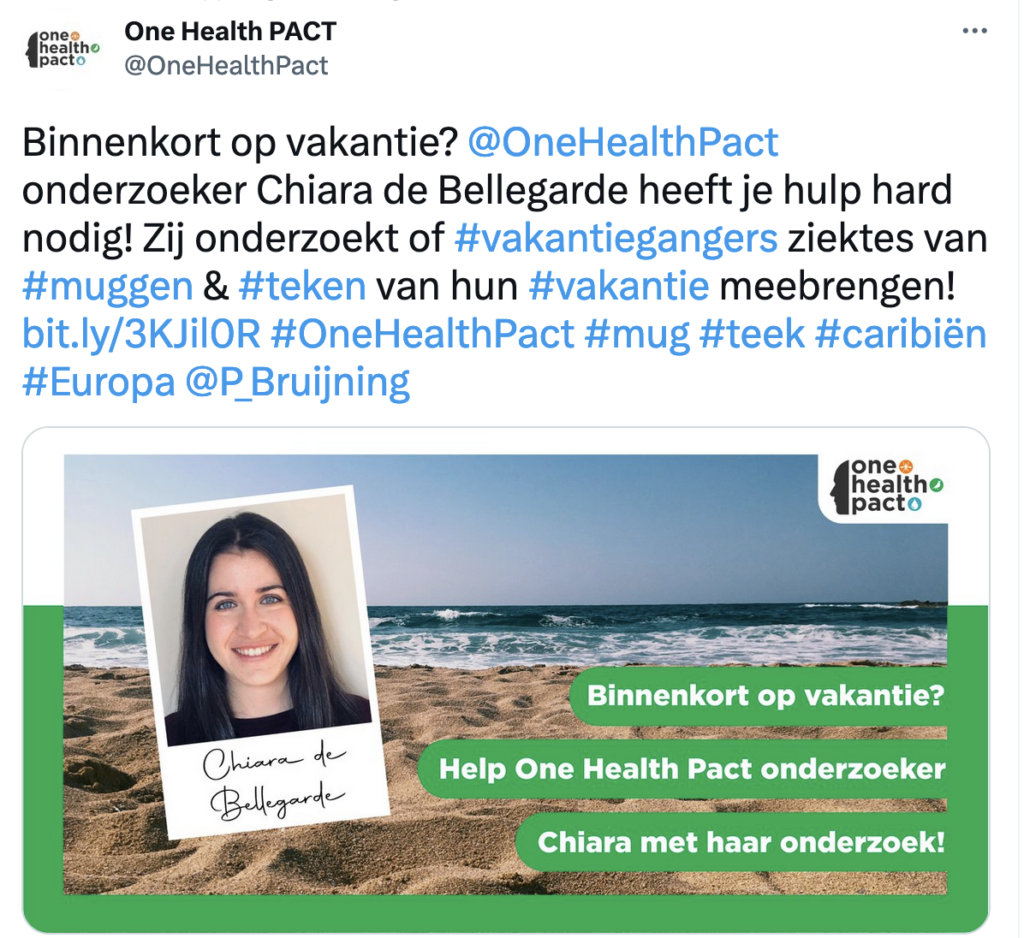
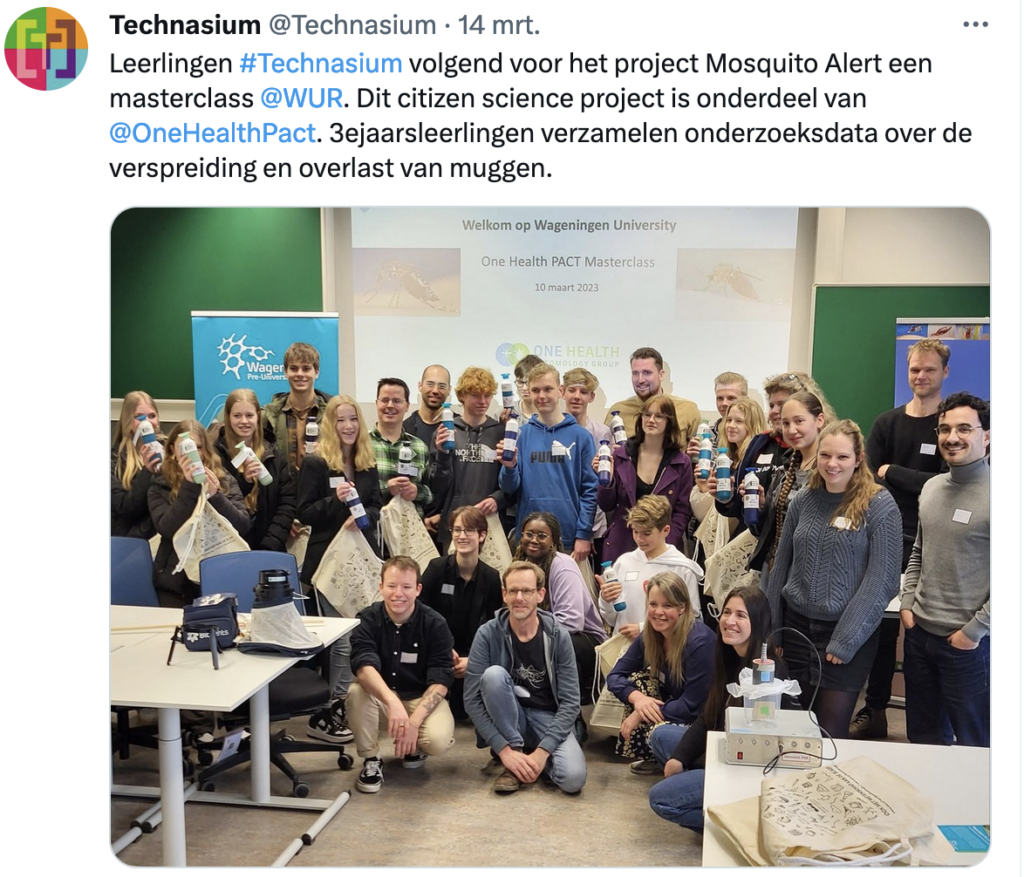
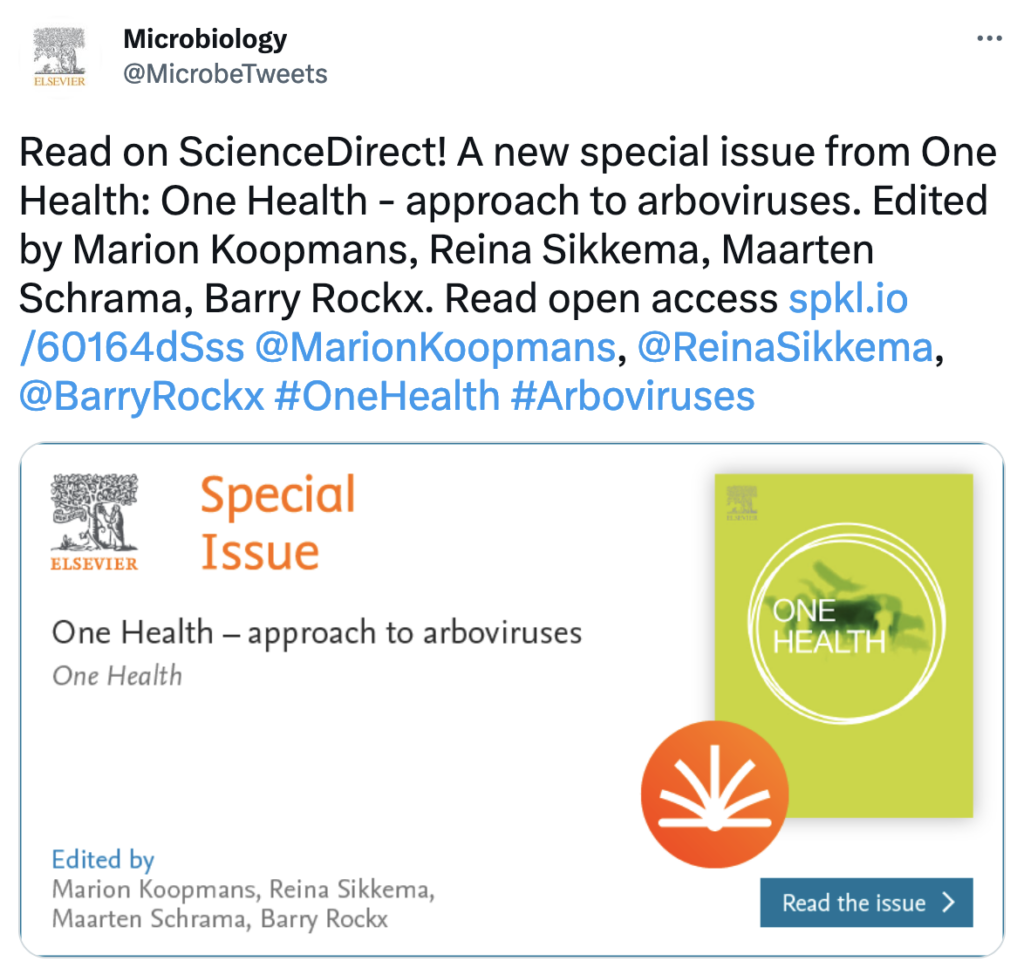
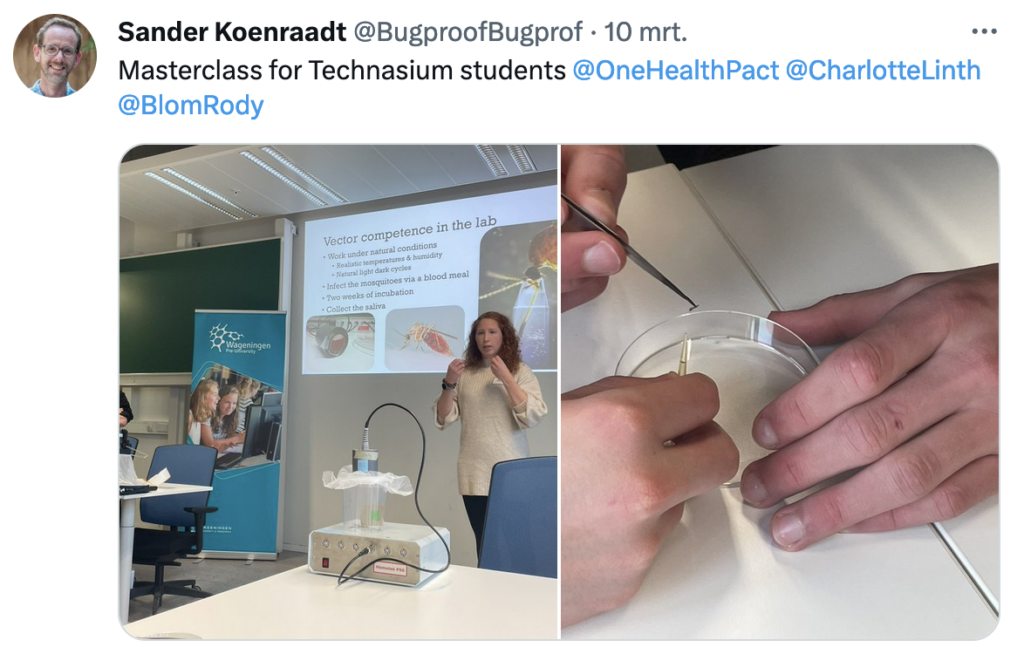
Follow One Health PACT on twitter: www.twitter.com/OneHealthPact and LinkedIn
Do you have anything to share rapidly? Use @OneHealthPact and we will forward your message.
Don’t have a twitter account: Email onehealthpact.communication@erasmusmc.nland the OIOs will post on your behalf.
One Health PACT
Powered by
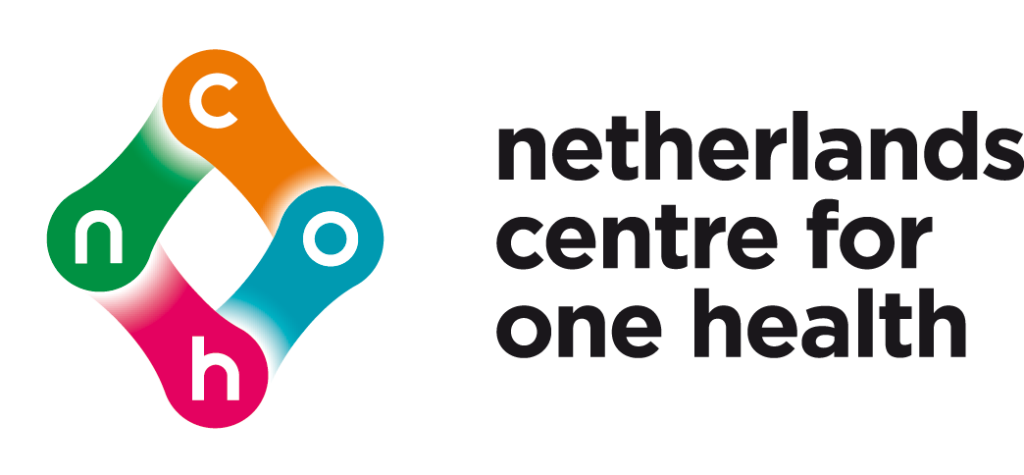


This newsletter is part of the research programme One Health PACT with project number 109986, which is (partly) financed by the Dutch Research Council (NWO).